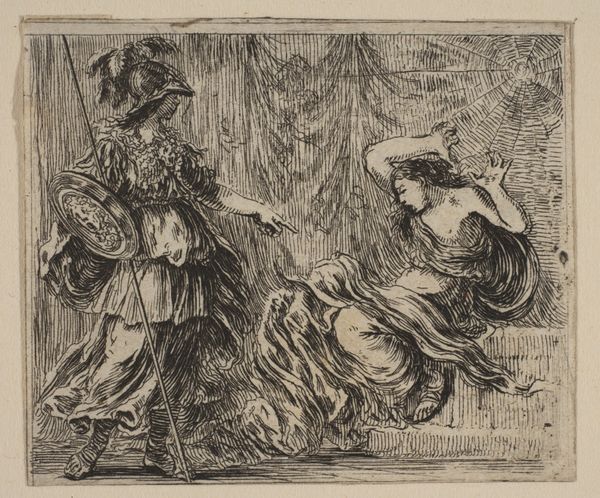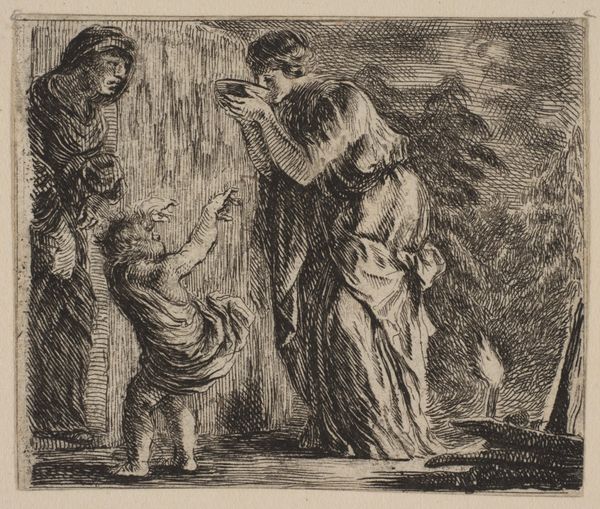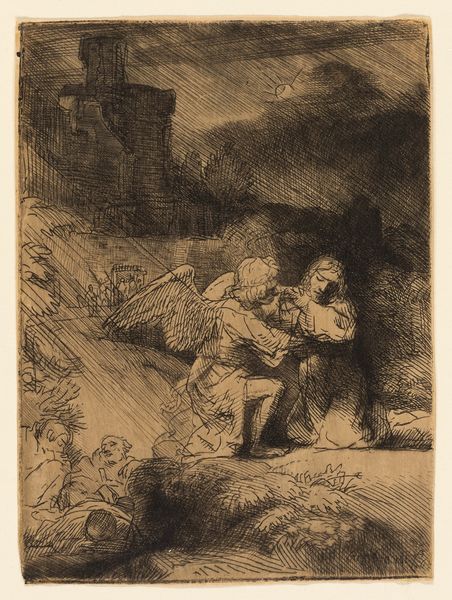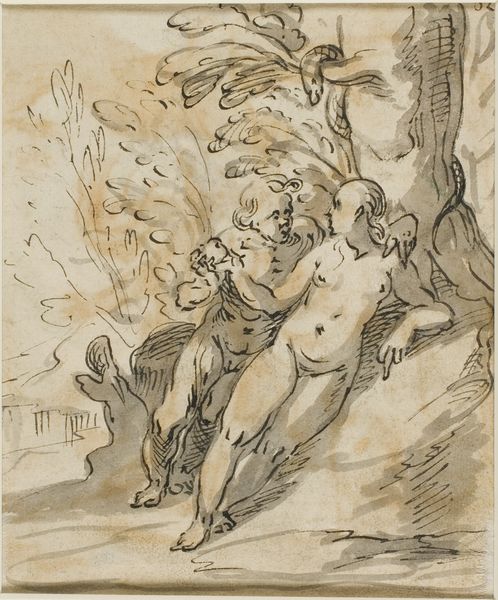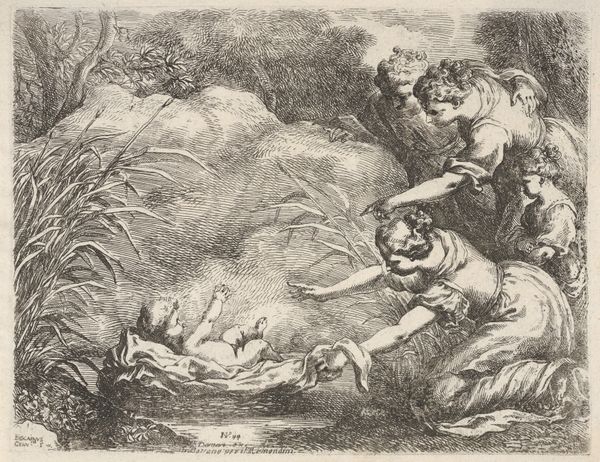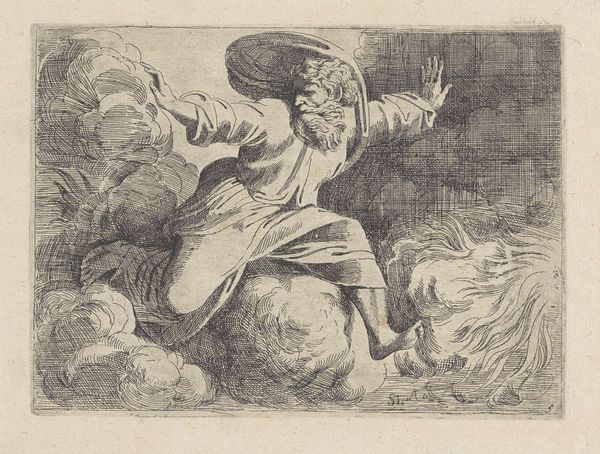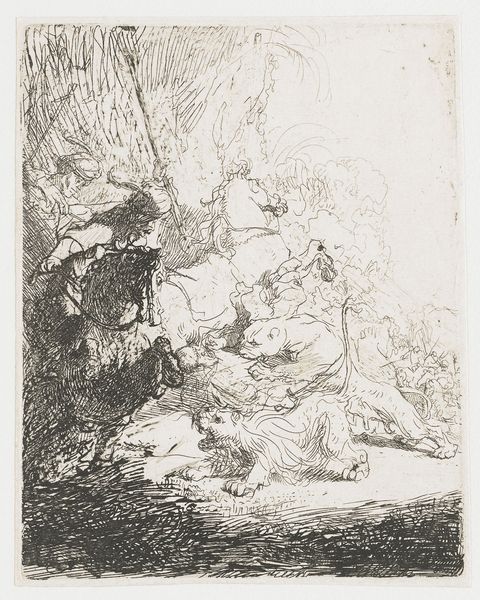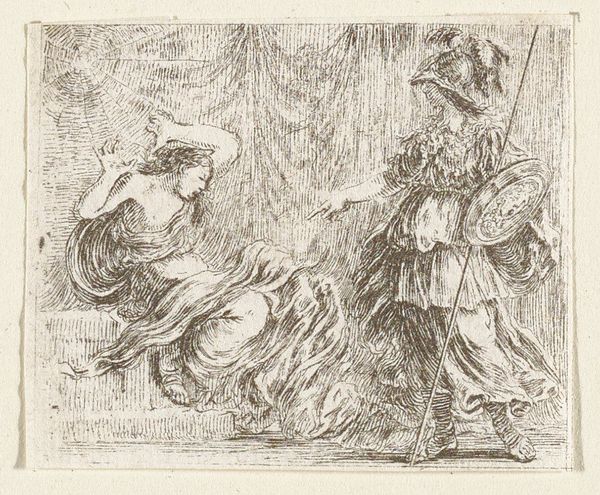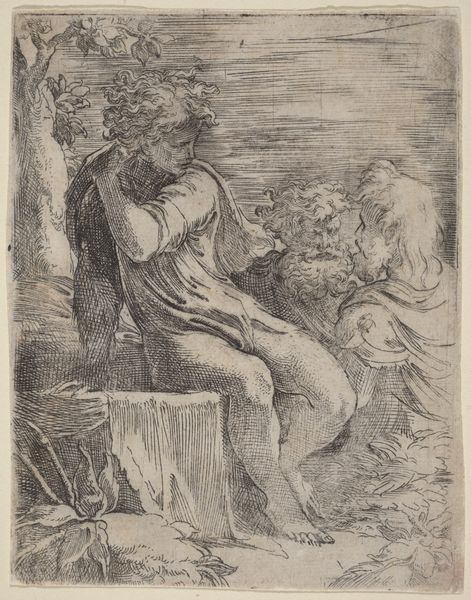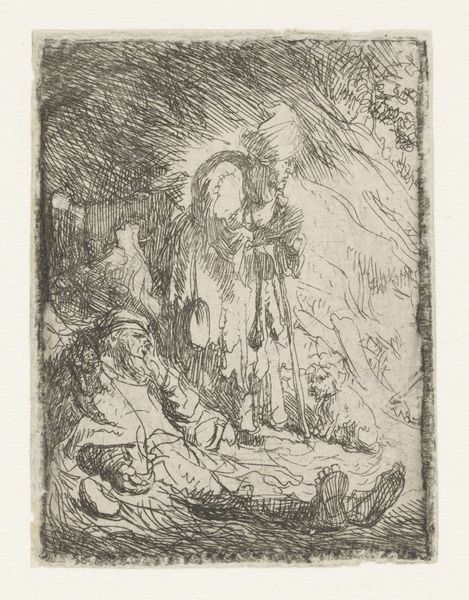
Pluto, from 'Game of Mythology' (Jeu de la Mythologie) 1644
0:00
0:00
drawing, print, etching
#
drawing
#
allegory
#
narrative-art
#
baroque
# print
#
etching
#
figuration
#
history-painting
Dimensions: Sheet: 1 7/8 × 2 5/16 in. (4.8 × 5.8 cm)
Copyright: Public Domain
Curator: Allow me to introduce Stefano della Bella’s “Pluto, from ‘Game of Mythology’ (Jeu de la Mythologie)”, dating back to 1644. It's currently held at the Metropolitan Museum of Art. Editor: It’s… murky. The stark contrast immediately pulls the viewer into what feels like a tense negotiation. The etching’s scale seems deliberately constrained, intensifying the claustrophobic scene. Curator: Precisely. The formal elements demand attention. Consider the use of line—hatching and cross-hatching constructing not just form, but also a very pronounced depth and chiaroscuro, so characteristic of Baroque sensibilities. The rigid verticality in the backdrop behind Pluto is counterpoised with a fluid contour on the left with diagonal hatching suggestive of an opening cave. What semiotic resonances do you glean from it? Editor: From a material perspective, the labor-intensive process of etching, where each line is carefully inscribed, lends weight to the representation of power and submission depicted. It speaks to the economics and systems inherent in the creation of this allegory through reproducible form for perhaps more popular consumption. Curator: Ah, an insightful observation about the potential democratization of myth. Note the allegorical content; this "Pluto" transcends mere illustration, functioning within a very specific Baroque aesthetic, designed to educate and impress upon viewers complex moral ideas. How might you connect its themes to its contemporaneous moment of making? Editor: Considering its probable context and usage as part of a 'game of mythology', it illuminates how classical themes permeated popular culture. Etchings, circulated through prints, became a tool for propagating power, luxury, and stories among the ruling elite who enjoyed and commodified it. Who knew this underworldly story was destined for parlor games? Curator: Indeed! Its narrative richness and linear articulation are deeply compelling even centuries later. Thank you for adding such compelling insight! Editor: It’s been a pleasure. Examining its physical and societal roots certainly brings renewed consideration for how these artworks were constructed, used and distributed.
Comments
No comments
Be the first to comment and join the conversation on the ultimate creative platform.
